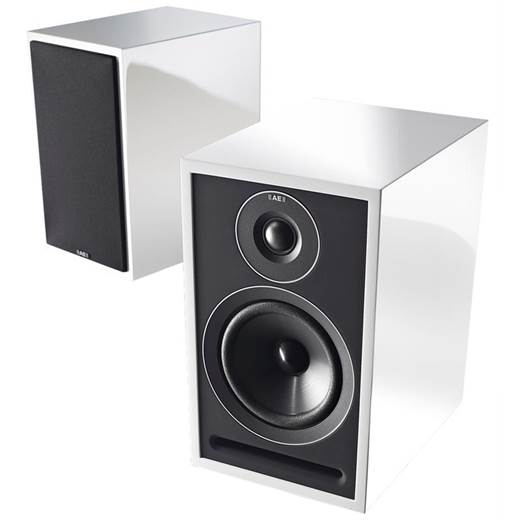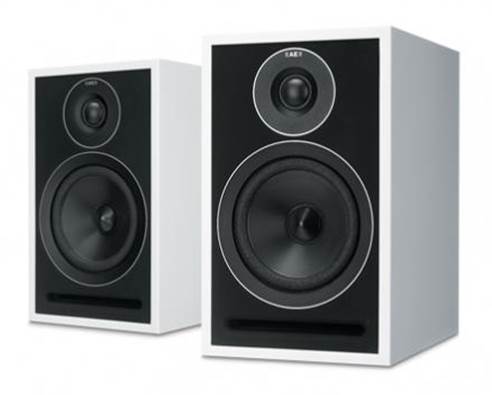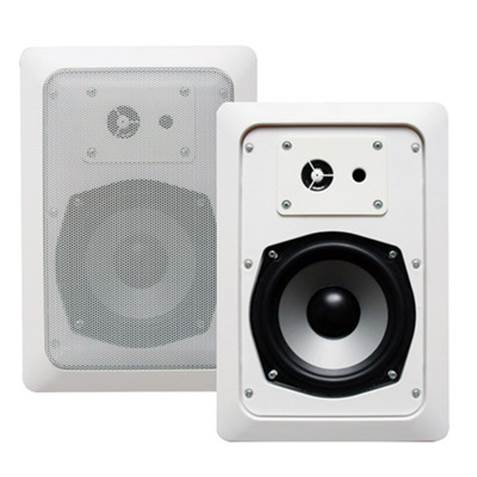Acoustic Energy’s 301 is a budget
stand mount that unusually employs spun alloy cones. James Michael Hughes hears
its genius…
Just over twenty years ago, Acoustic Energy
launched its original AE-1 loudspeaker to considerable acclaim. It quickly
earned a reputation as one of the best compact near-field monitors you could
buy, establishing the credentials of the brand. The AE-1 continues to this day
as the AE-1 Classic, but for those with less to spend AE offer their 3 Series.
This new range consists of the 305 floor stander,
the 301 compact, plus 307 center speaker, and 308 subwoofer. Clearly the
intention is to plant a foot in both purist hi-fi and home theatre camps. The
301 can be used as a compact high-fidelity speaker in its own right, or as a
rear channel speaker (with 305s upfront) in a surround set-up.

Acoustic
Energy 301 Loudspeaker
The 301 is a classic two-way stand mount
design that was penned in England but manufactured in China, and very high
standards of build quality and finish come as standard. The cabinets are ported
(albeit with an unusual wide frontal slot rather than a round hole) and made
from 18mm-thick MDF.
It sports a rigid, internally-braced
cabinet damped with (what looks like) white synthetic wool. The enclosure feels
solid and is very well made. Single wiring (via gold-plated 4mm posts) is
offered. A choice of black or white high-gloss lacquer finishes are offered,
making the speakers look more expensive than their $660 price tag suggests.
With a quoted sensitivity of 87 dB, you’ll
ideally need an amplifier with at least 50W output given a medium to large
sized room. True to the brand’s tradition, a simple five-element crossover is
employed. In use, the 301s are quite happy being driven with a big amp; AE
suggest 150W maximum power handling. But despite medium sensitivity – they’re
not too power - hungry. The impedance is nominally around 8 ohms and AE claims
it does not fall to below 6 ohms. You’re never going to get flare-flapping
levels from a small stand mount such as this, but they’re still go usefully
loud!

The
301s are terrific speakers and the most competitive Acoustic Energy speakers
we've heard in years
Something that distinguished the original
AE-1 front its peers was the use of a metal coned bass/mid driver. Most rivals
choose paper (often doped), or plastics. Metal has the advantage of being
stiffer than traditional materials, and is reasonably light too. But there are
always pros and cons, regardless of the material used! The 301 features a 110mm
spun aluminum metal coned bass/mid driver, partnered with a 28mm dia
fabric-domed tweeter. As with most smallish speakers, deep bass performance is somewhat
limited in terms of absolute depth. But the 301s offer clear, defined ‘lows’, I
found.
Tonal balance is lucid and fast, the
presentation detailed and focused with plenty of bite and attack
Sound quality
Tonal balance is lucid and fast, rather
than warm and lush. The presentation is very detailed and focused, with plenty
of bite and attack. It’s not an especially rich or beguiling sort of sound, but
it is clear and nicely open. Clarity is excellent, with good separation and
fast scrisp attack. The treble is incisive, but not overly forward.
Trying a quick blast of Tales from
Topographical Oceans by Yes on vinyl, I was impressed with the complex
synthesizer lines and heavily-layered voice and guitar parts. The sound was
detailed and crisp, but avoided congestion when things got busy. Pitch
definition of bass instruments was clear, but the speakers did not create a
full bottom end. While this might disappoint some listeners, it’s arguably
better to have a clear clean, if somewhat light bass, than something weightier
that sounds thick, heavy, and ponderous. You can always add a subwoofer to
increase bass depth or weight, of course…

301’s
excellent transient attack and lack of congestion ensured that each note
remained separate and clear – even in dense complex passages
Playing the recent Schubert symphonies set
with Mark Minkowski on the Naïve label, the sound was lithe and nicely forward.
On this recording, massed violins sounded very lucid maybe a touch bright in
terms of tonal quality, but not unpleasantly so. The orchestra is placed at a
medium/close distance, in a fairly dry acoustic, without much ambience. Most
orchestras tend to deliver a leaner more incisive sound than they did (say)
thirty years ago (a legacy of the Period Instrument revolution), and that’s
what the 301s reflected. Has the lower frequencies been a touch deeper and
fuller, the overall balance would have been better, but the end result was
still very enjoyable.